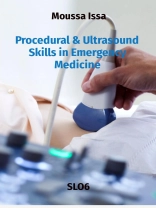The realm of emergency medicine is perpetually evolving, and concomitantly, the impartation of competencies and proficiencies is expanding. Furthermore, each successive cohort of emergency physicians necessitates supplementary knowledge and aptitudes to meet the necessities of their training tenure. Consequently, acquiring requisite proficiencies has assumed augmented significance within emergency medicine instruction.
Procedural and ultrasonographic proficiencies have garnered recognition from the Royal College of Emergency Medicine (RCEM) as being notably advantageous and integral to all assessments the institution conducts. This escalating importance primarily stems from the heightened emphasis on patient safety and the heightened stringency of standards in accredited training regimens.
With the advent of technological advancements and the widespread availability of ultrasonographic apparatus within numerous emergency departments, point-of-care ultrasound (POCUS) has emerged as a quintessential skill imperative for every emergency physician to possess. When judiciously executed, POCUS confers appreciable advantages in the precision of interventions and mitigates sundry complications. Ergo, attaining a specific threshold of skill proficiency becomes imperative to complete ultrasonography with accuracy and avert potential patient complications.
The RCEM has promulgated a comprehensive catalogue of proficiencies that an emergency department physician should comprehend. Additionally, emergency department clinicians must reveal familiarity with the indications, contraindications, anatomical landmarks, and plausible complications associated with each procedural modality. Beyond a meticulous comprehension of emergency procedures, the present compendium is an invaluable resource for medical students and emergency care practitioners. Within its pages, emergency physicians will encounter many insights concerning established and burgeoning issues pertinent to procedural and ultrasonographic proficiencies.












